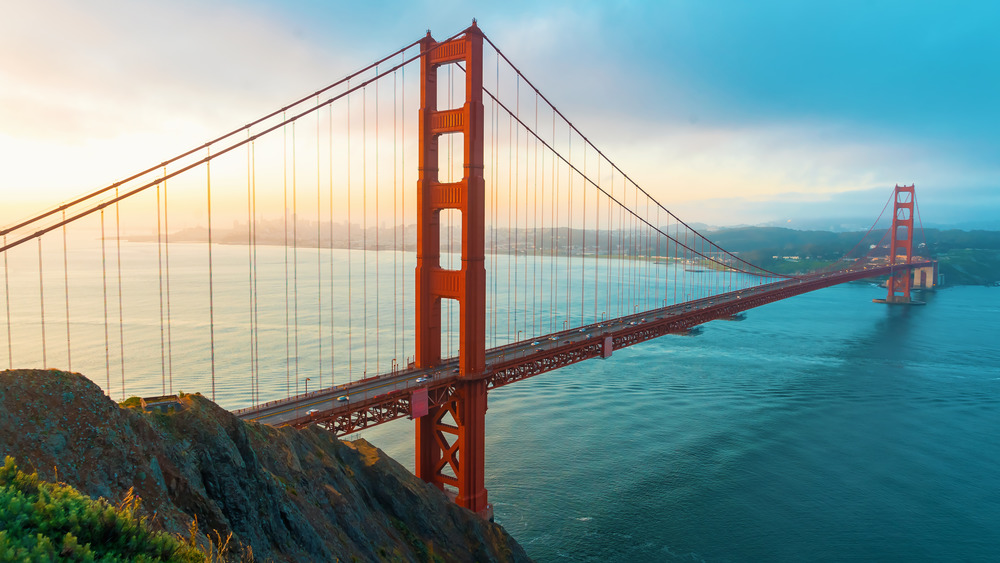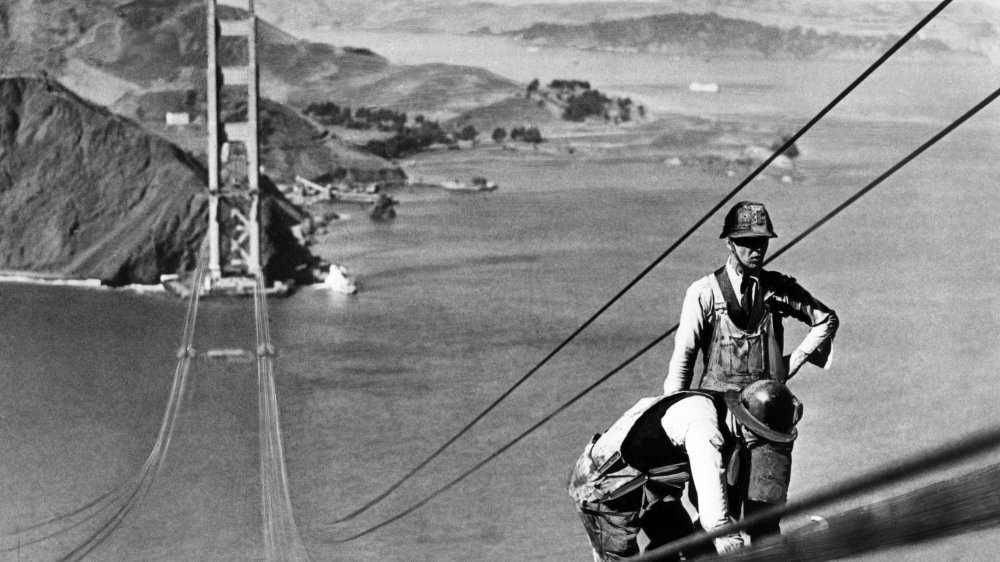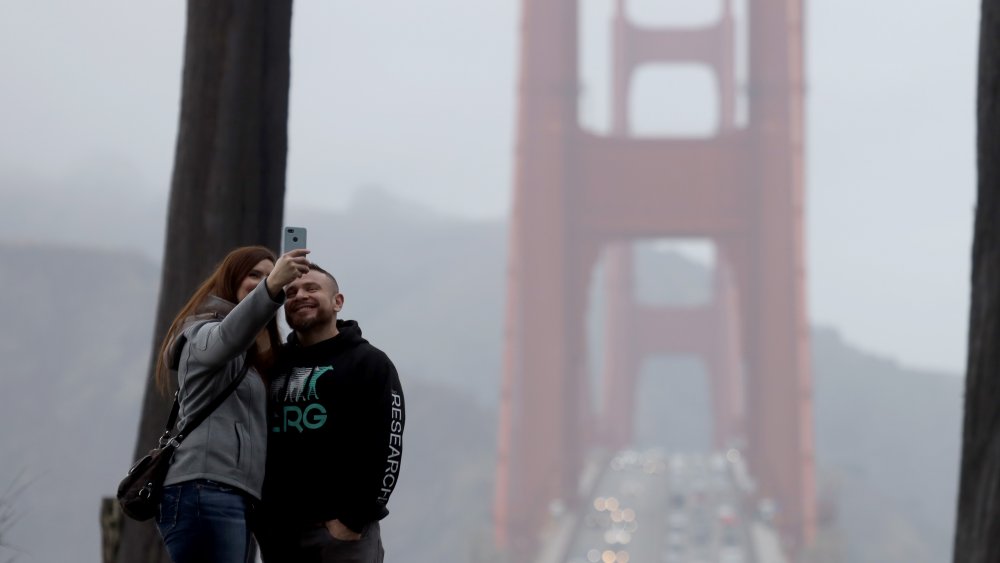Here's How The Golden Gate Bridge Was Actually Built
Tony Bennett keeps telling us how he left his heart there. He isn't the only one. Human beings have been occupying the area of San Francisco for about 5,000 years, according to History. The California city boasts one of the Pacific Ocean's largest natural harbors. Europeans entered the scene in 1769 and found it very good. The town was originally called Yerba Buena. The Spanish Misión San Francisco de Asís was thriving by 1808. The United States Navy raised the Stars and Stripes in 1846, and the next year the settlement was renamed San Francisco. The great 1906 earthquake — nearly 8.0 on the Richter scale — nearly destroyed the city, but it rebounded and rebuilt.
And while natural harbors are great good things, they do pose transportation challenges. How to get from one side of the bay to the other? By road, very much the long way 'round? Take a boat across? That has potential, unless you're trying to deliver goods on some sort of regular basis. Thus, in the thirties, one of San Francisco's signature landmarks was born: the Golden Gate Bridge.
The project had a remarkable safety record
The bridge isn't actually golden. It takes its name from the Golden Strait, which is the entrance to the harbor, as the bridge's website explains. The distinctive paint job served a couple of purposes, but one big thing was that the bridge could be seen more easily in San Francisco's justly famous fog, and consulting engineer Irving Morrow just liked it better than the standard gray or black.
Construction began in 1933. It stretches 1.7 miles, measures 90 feet across, and was one of the safer construction projects of the time. Rule of thumb in those days was that one person would die per $1 million in cost. The bridge was budgeted at $35 million, but only 11 men died building it, and ten of those in one horrible accident. Part of the impressive safety record was due to chief engineer Joseph Strauss's requirement that workers wear hardhats (a first) coupled with an effective safety net slung under the structure.
The structure remains a popular tourist spot
The bridge was, and remains, an engineering marvel. As History explains, some 3.25 million cubic feet of earth was removed to make way for the bridge's anchorages. The towers were completed by 1935, and New Jersey's John A. Roebling's Sons Company, who had also worked on the Brooklyn Bridge, took on the on-site construction of the suspension cables that would provide support for the bridge. In a remarkable achievement, the company finished its work six months early, spinning 25,000 individual wires into each of the 7,650-foot cables. As Let's Build tells it, pontoons were placed across the water. As construction progressed, workers added to the pontoons, drawing out the cables and lifting sections of roadway into place. Once the roadway was completed, it was paved.
The whole project came in ahead of schedule, and under budget. After $39 million — around $500 million in 2020 dollars, says How Stuff Works — the suspension bridge opened for use in 1937.


